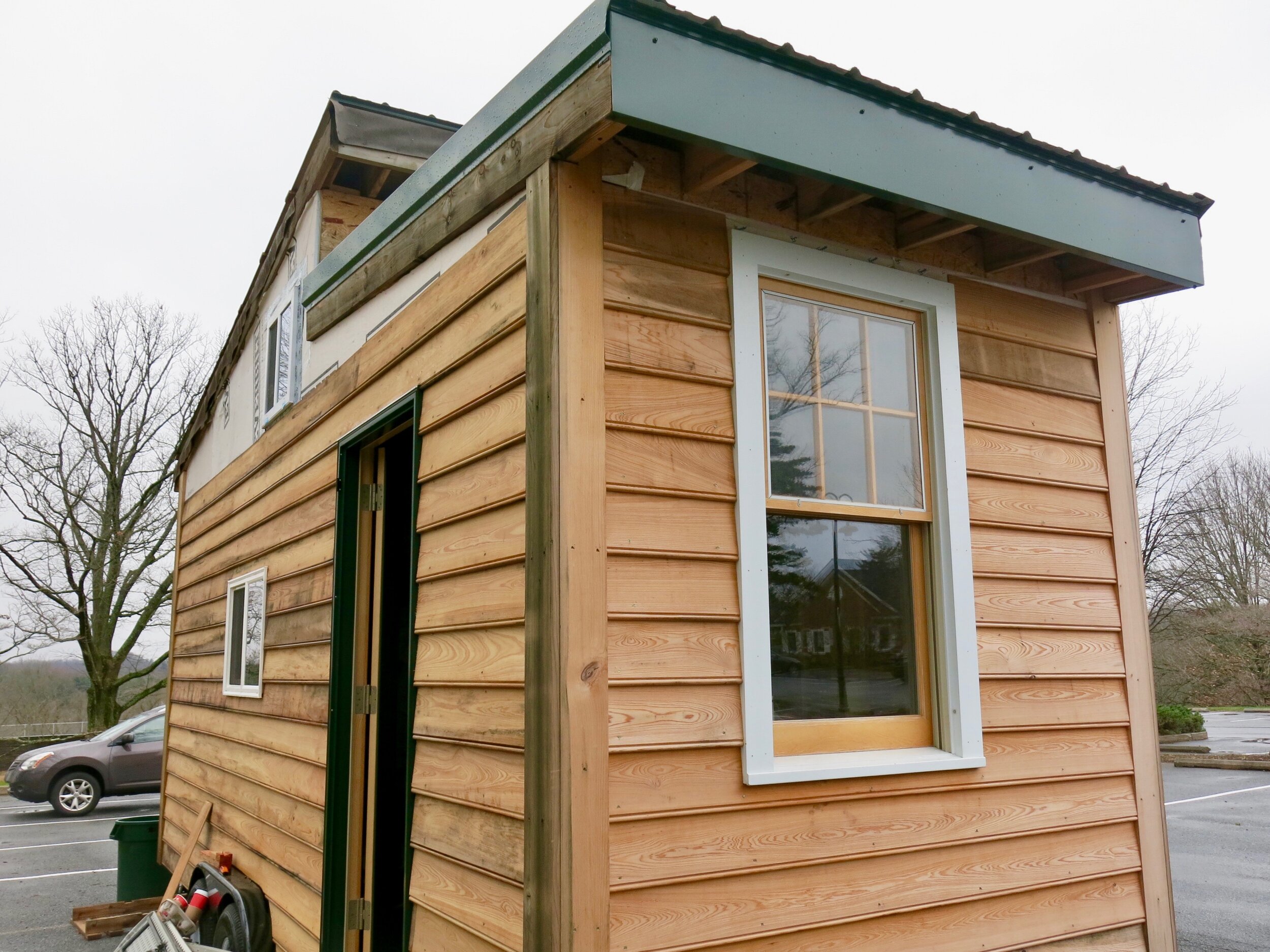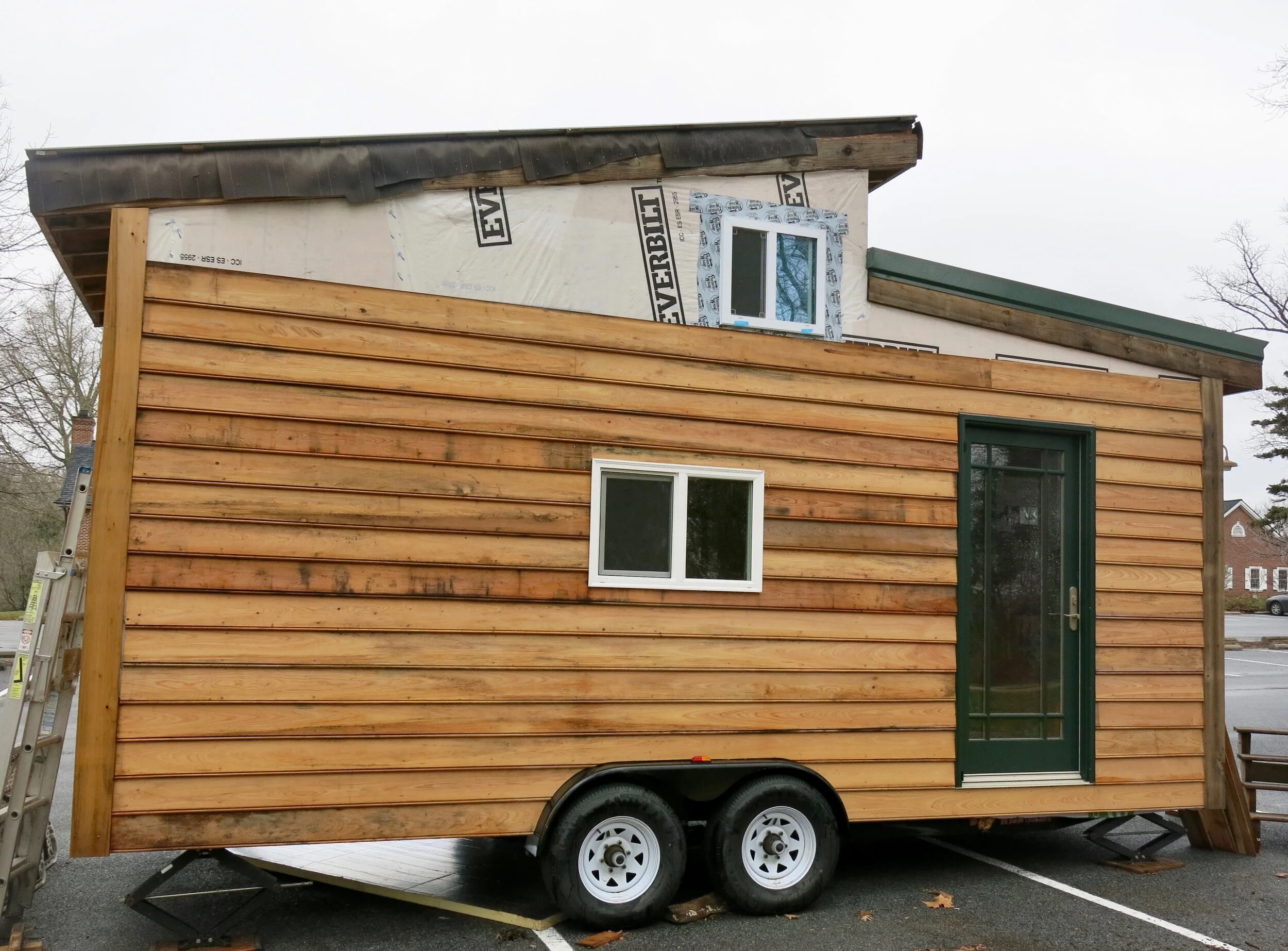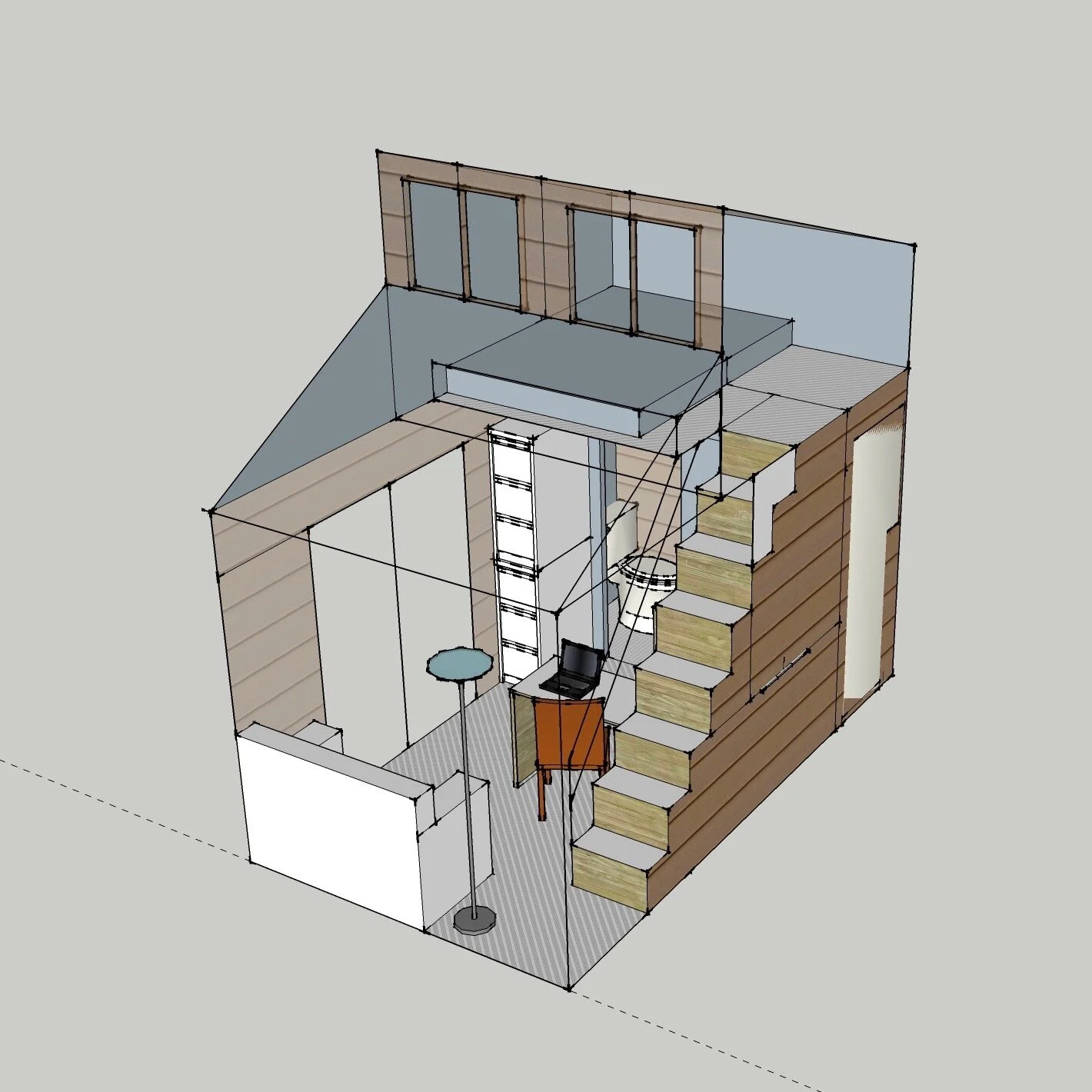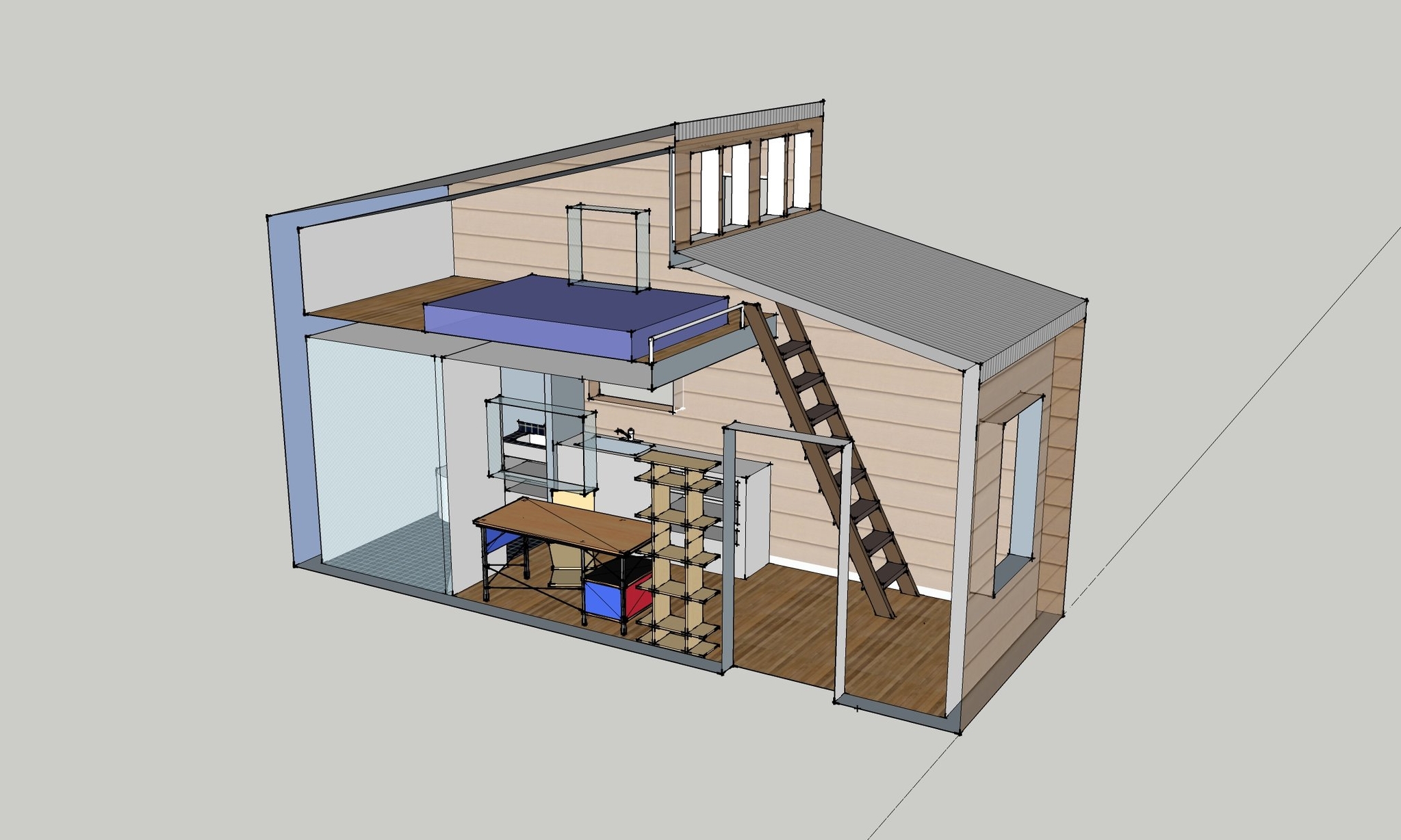Tiny House
What—
Designed and built a sustainable, off the grid, single-dwelling tiny house. I worked as the head designer for the structure and helped lead the build process over the course of multiple semesters.
Why—
The Westtown School Tiny House was created as guest residence for campus visitors at the West Chester, PA boarding school.
How—
Due to the fact we relied mainly on recycled and/or donated parts, it was necessary that the plan stay flexible. Doors, windows, and side paneling were all received through donation. Using SketchUp, I created and pitched my initial concepts— altering the design as material and budget limitations shifted.
Iterations—
On the far left is the first plan I proposed to the Tiny House group. The middle and far right image show my gradual modifications to the plan as aspects such as trailer size and budget were revised. The far right image is the plan that was referenced during our two main build weeks.
The largest, top image displays the house's finalized proportions and window/door placements.
After the main build weeks I continued work on the house with a small group, focussing on solar panel research and repair, creation and installation of tongue-in-grove flooring, deconstructing used pallets and prepping them for interior wall coverings, and various other interior construction projects.
progress upon graduation
The interior contains a functioning loft and a framed out bathroom with a solar-powered composting toilet. Systems being completed and prepared for installation at the time of my involvement include solar power (for the main electrical needs), a biogas digester (to power a small stove and contribute to heating), and a compost pile heating system (for recycling waste and to contribute to heating needs).
After multiple builds, the exterior was nearly complete. Other sustainable elements scheduled to be installed includes a rainwater collection tank and a small grey water system. Denim insulation (made from recycled blue jeans with minimal use of energy during manufacturing) was used as a sustainable, eco-friendly alternative to fiberglass insulation.
After the major design tasks and main builds were completed, I continued my work on the Westtown Tiny House through the installation of interior aspects (flooring, wall paneling, etc.) as well as research/installation of multiple sustainable functions (solar power, composting toilet and biogas digester). My hope for the project was that future Westtown students would continue to build on the project we began and take the Tiny House to new levels. The Westtown Tiny House is even now being improved upon with every incoming class.









